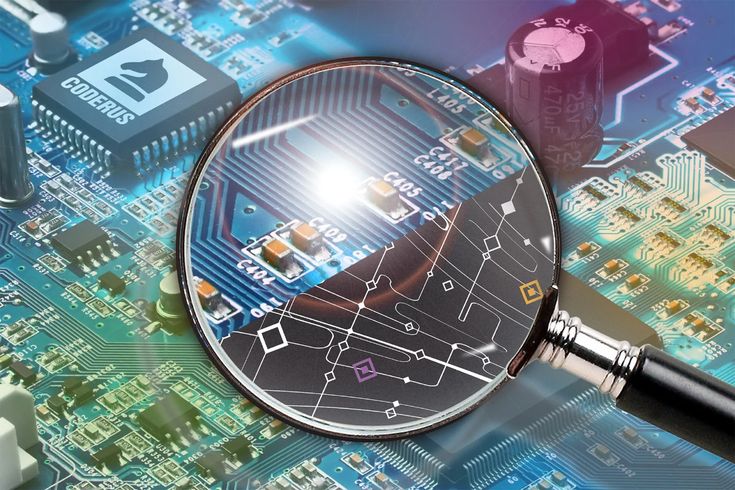When it comes to careers in electronics and computer engineering, Embedded Systems and VLSI (Very Large Scale Integration) are two of the most sought-after specializations. Both play a vital role in the development of modern technology — from smartphones and IoT devices to processors and semiconductors. But if you’re trying to decide which field to pursue, one common question arises: Which offers a better salary — Embedded Systems or VLSI?
Let’s explore this comparison in detail.
Understanding the Two Fields
Embedded Systems
An embedded system is a combination of hardware and software designed for a specific function within a larger system — for example, microcontrollers in washing machines, sensors in cars, or processors in smart devices.
Key skills required:
-
Programming languages: C, C++, Python
-
Microcontrollers & Microprocessors (ARM, PIC, AVR)
-
RTOS (Real-Time Operating Systems)
-
Embedded Linux, IoT protocols, and hardware interfacing
Industries hiring embedded engineers:
-
Automotive (ADAS, EVs, infotainment)
-
Consumer Electronics
-
IoT & Smart Devices
-
Healthcare and Defense
VLSI (Very Large Scale Integration)
VLSI involves designing and fabricating integrated circuits (ICs) that power all kinds of electronic devices. Professionals in this field focus on chip design, testing, and verification.
Key skills required:
-
Digital design and CMOS concepts
-
Hardware Description Languages (HDL): Verilog, VHDL, SystemVerilog
-
ASIC & FPGA design
-
EDA tools (Cadence, Synopsys, Mentor Graphics)
Industries hiring VLSI engineers:
-
Semiconductor Manufacturing
-
Consumer Electronics
-
Telecommunications
-
AI Hardware and Robotics
Salary Comparison: Embedded Systems vs VLSI
Let’s look at how salaries compare in both fields at different career levels.
| Career Stage | Embedded Systems (India) | VLSI (India) | Embedded Systems (Global) | VLSI (Global) |
|---|---|---|---|---|
| Entry Level (0–2 years) | ₹4–8 LPA | ₹6–10 LPA | $60,000–$90,000 | $80,000–$110,000 |
| Mid-Level (3–7 years) | ₹8–15 LPA | ₹12–20 LPA | $90,000–$120,000 | $110,000–$140,000 |
| Senior Level (8+ years) | ₹15–25 LPA+ | ₹20–35 LPA+ | $120,000–$160,000 | $140,000–$180,000 |
From the table, it’s clear that VLSI engineers generally earn higher salaries than Embedded Systems engineers, especially in mid-to-senior roles.
Why VLSI Pays More
-
High Skill Demand, Low Supply: VLSI design requires deep expertise in semiconductor physics and EDA tools — skills that are difficult to master.
-
Core Industry Jobs: VLSI professionals often work in chip manufacturing and design companies like Intel, NVIDIA, AMD, Qualcomm, and TSMC, which offer premium salaries.
-
Limited Professionals: The VLSI field has fewer qualified engineers, making experts highly valuable.
Why Embedded Systems Are Still Lucrative
-
Wider Industry Applications: Embedded engineers are needed in automotive, consumer electronics, healthcare, and IoT — industries that are rapidly expanding.
-
Faster Job Growth: While VLSI jobs are fewer, embedded roles are more widespread and offer easier entry for beginners.
-
Path to IoT and AI Integration: Embedded systems now blend with AI, machine learning, and robotics — creating new, well-paying opportunities.
Job Availability: Quantity vs Quality
-
Embedded Systems: Offers more job openings across industries. Startups and SMEs hire embedded developers for IoT and automation projects.
-
VLSI: Offers fewer but high-paying positions mostly concentrated in semiconductor and electronics giants.
If you prioritize job security and flexibility, embedded systems may be a better choice. But if you’re aiming for premium salaries and are ready to work in a highly technical niche, VLSI is ideal.
Educational Pathways
-
Embedded Systems: A B.Tech in Electronics, Computer, or Electrical Engineering is enough to start, with short-term certification in Embedded C, RTOS, or IoT.
-
VLSI: Requires a deeper academic foundation. Many professionals pursue an M.Tech in VLSI or chip design to access higher-level roles.
Future Growth Trends
-
Embedded Systems: Expected to grow rapidly due to IoT, autonomous vehicles, and smart devices.
-
VLSI: Will remain strong with increasing demand for high-performance chips in AI, 5G, and consumer electronics.
Both fields are promising — but VLSI leads slightly in salary, while Embedded Systems leads in versatility and job opportunities.
Final Verdict
If your goal is a high-paying, specialized career, VLSI has the upper hand — though it requires greater technical depth and patience to succeed.
However, if you’re looking for broader opportunities and faster entry into the tech world, Embedded Systems is the better choice.

